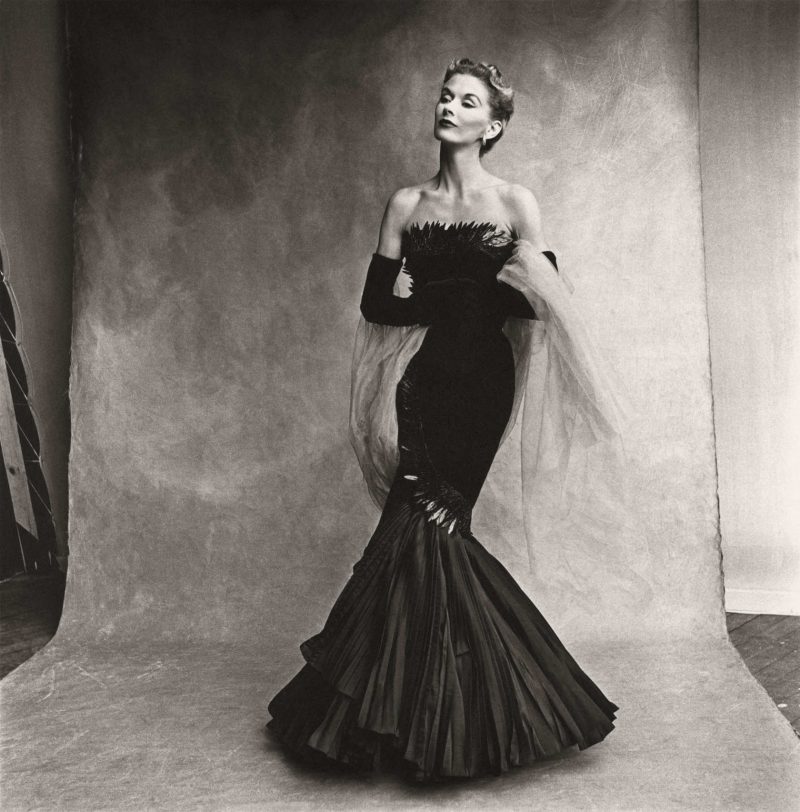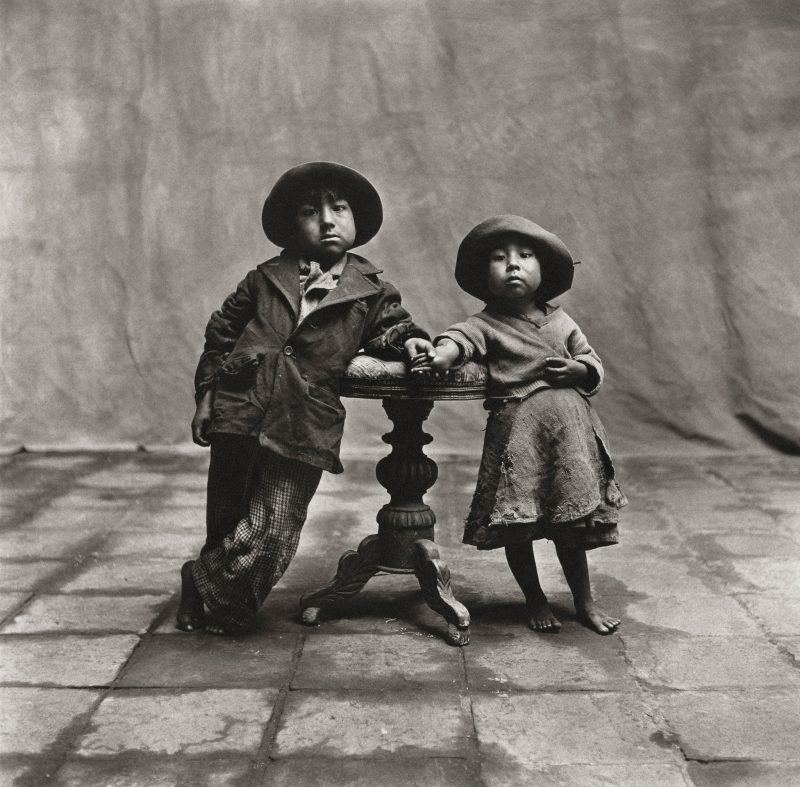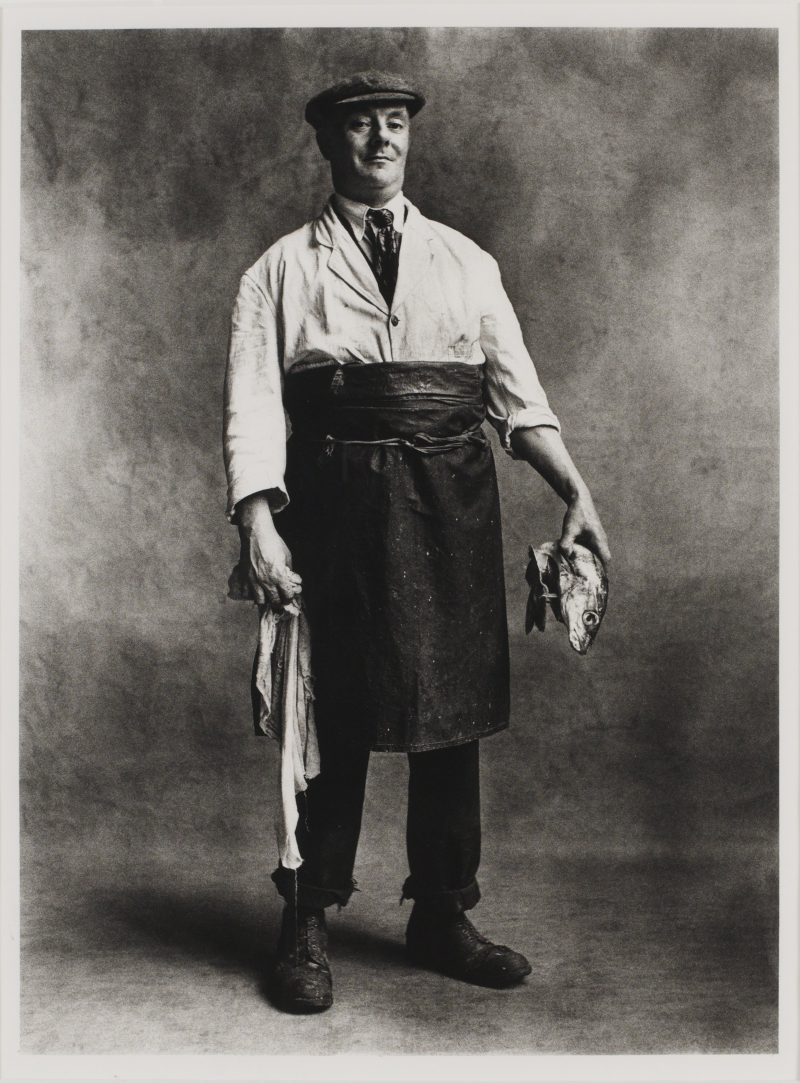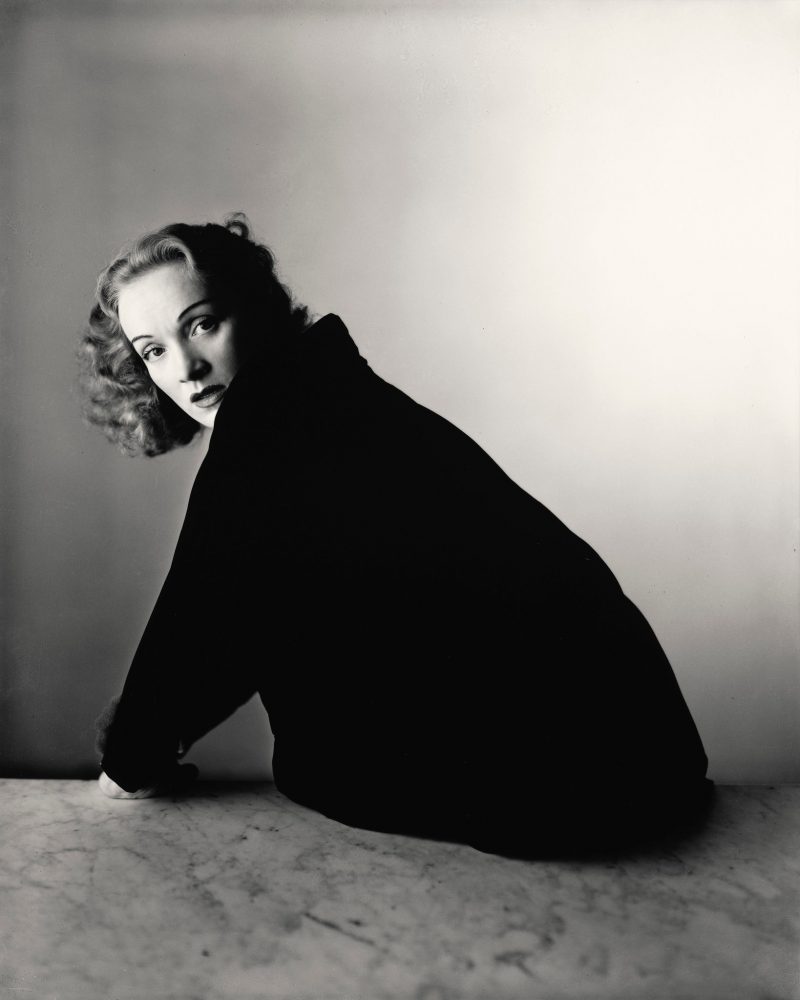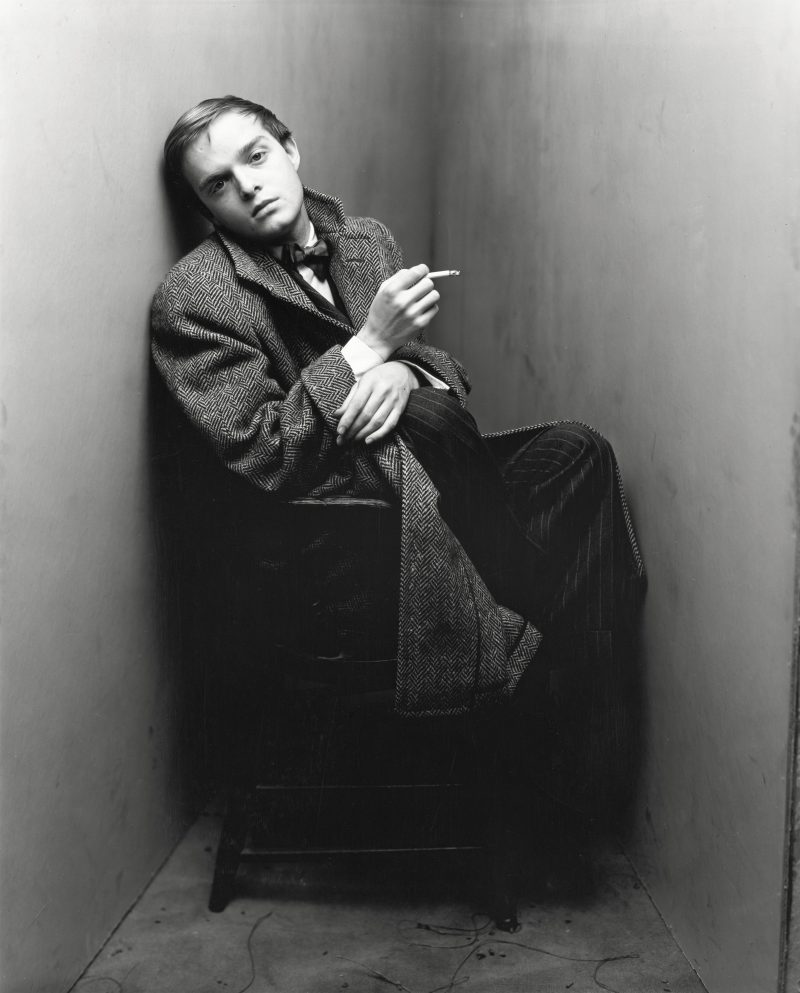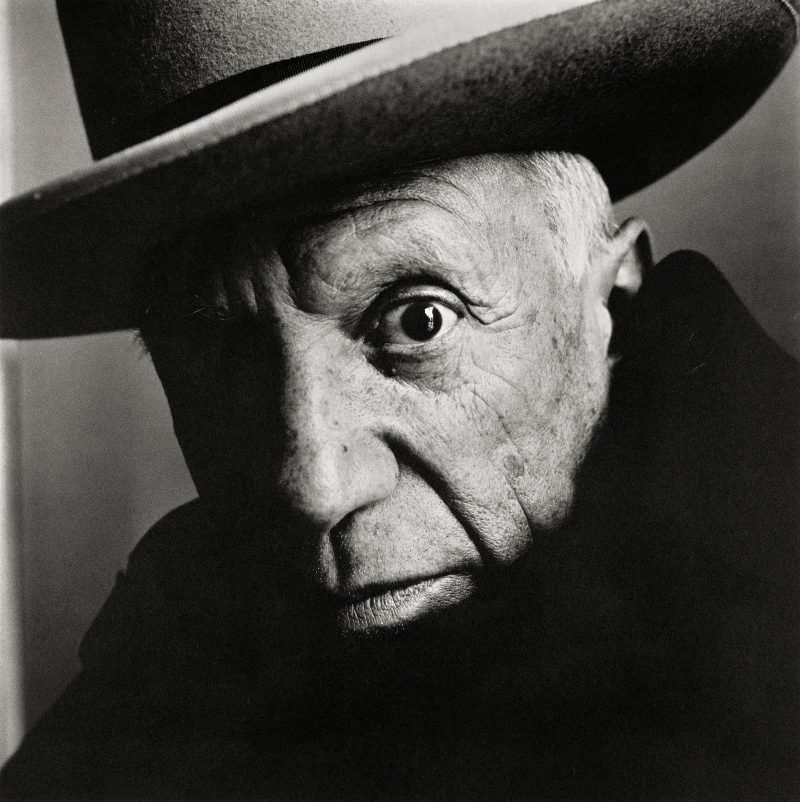Irving Penn Centennial
At The Metropolitan Museum of Art, New York, through July 30, 2017
Money. Status. Power. Fashion. Style. Art. And some humanity, if it’s in the budget. Postwar New York.
The first object we see in the exhibition is one of Irving Penn’s cameras, his favorite make, a Rolleiflex. This particular example is a 3.5 E3 from the early 1960s, with a modified Hasselblad chimney viewfinder. Very analog. This is pre-apocalyptic technology. There is no AI here.
Penn’s career started just before World War Two with a foray into street photography—close up, detailed shots of commercial signs in New York and Philadelphia, taken when he was just out of art school. This work is resolutely prewar.
His compositions are subtle and unobtrusive. The sparseness of the background draws the viewer’s eye to the subject. Another of Penn’s achievements was his extraordinary innovations in photographic printing. The platinum palladium prints here display detail and depth with extraordinary vibrancy.
And Penn had a gift for backgrounds. Earlier on, he used an inverted triangle, with his subject at the narrowest, furthest point from the camera. All lines lead to the center. Still early in his career, Penn pioneered the use of backdrops. In this exhibition, one has the chance to be photographed in front of Penn’s preferred backdrop—a Parisian theater curtain painted with soft gray clouds. It makes everyone look better! (See the author of this review.)
Let’s get to the pix. Penn is primarily known as a fashion photographer, and here we see a number of his photographs for Vogue from the late forties through the nineties. They’re all done very well, but this part of his work left me largely unmoved. Stylish, yes, but, however beautiful, these photographs did not touch me. Sorry, but I find high fashion superficial. And expensive. It’s about money and status, and constitutes one of the purest examples ever of conspicuous consumption. (We need to bring back Thorstein Veblen.)
However, one does not require money to have style. No photographs I’ve ever seen demonstrate this truth more profoundly than Penn’s photographs from Cuzco, 1948. Penn traveled to Perú on assignment from Vogue to photograph Quechuans living in their ancient capital. This trip produced an extraordinary collection of photographs—for me, the peak of the exhibition. Style is not just clothes; style expresses itself in demeanor and attitude. In the eyes and faces of Penn’s Cuzco subjects, one can see hard, generations-old memories of the Spanish conquest, over four hundred years in the past, but still as present as if Pizarro had marched in two days previously. And one sees more than a little contempt for the blanco ruling class with its impeccable Iberian heritage. Their clothing, hand-made, each piece within a coherent tradition and yet individual, has boatloads of style—and functionality as well. Hats, ponchos, pants—protection against the rigors of the Andean climate and the hazards of hard labor, and decorated in a way that is a celebration of survival and life. Later in his career, Penn traveled to New Guinea, Morocco, and West Africa, and these photographs again reveal deep creativity expressed with limited resources. For me, the photographs from Cuzco are the purest and deepest expression of Penn’s humanitarian vision, untempered by commercial imperatives of his high fashion work.
Penn also photographed the London working class, the indigenous inhabitants of the East End. Again, lots of attitude, and, sometimes, a little shame. The same can be seen in American and French workers Penn photographed. These clothes are mass produced for specific trades, so the opportunities for individual expression are limited. Perhaps the most stylish are the Parisian workers. No surprise there.
Rounding out the exhibition are a wide selection of Penn’s celebrity photographs. Just about every one of these portraits shows us something about its subject they wanted to hide. The usual suspects are here: Marlene Dietrich, Richard Burton, Yves Saint Laurent, Audrey Hepburn, Jean Cocteau, Picasso, and more. Penn makes T.S. Eliot, American liberalism’s second-favorite fascist, look like a banal London banker. Especially revealing is the portrait of Tom Wolfe from 1966. Wolfe’s vanity and sarcasm is on full display here. And spend some time with the two portraits of Truman Capote. In 1948, Capote is young and louche. By 1965, Capote has seemingly aged thirty years in those seventeen.
For more on the exhibition, go here.
–Franklin Mount
Galleries Photographs
